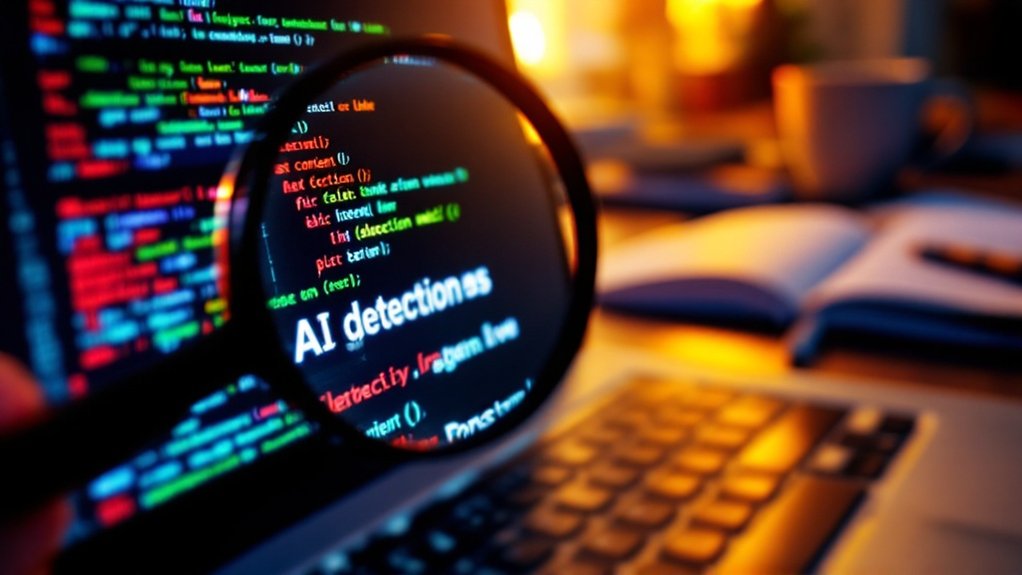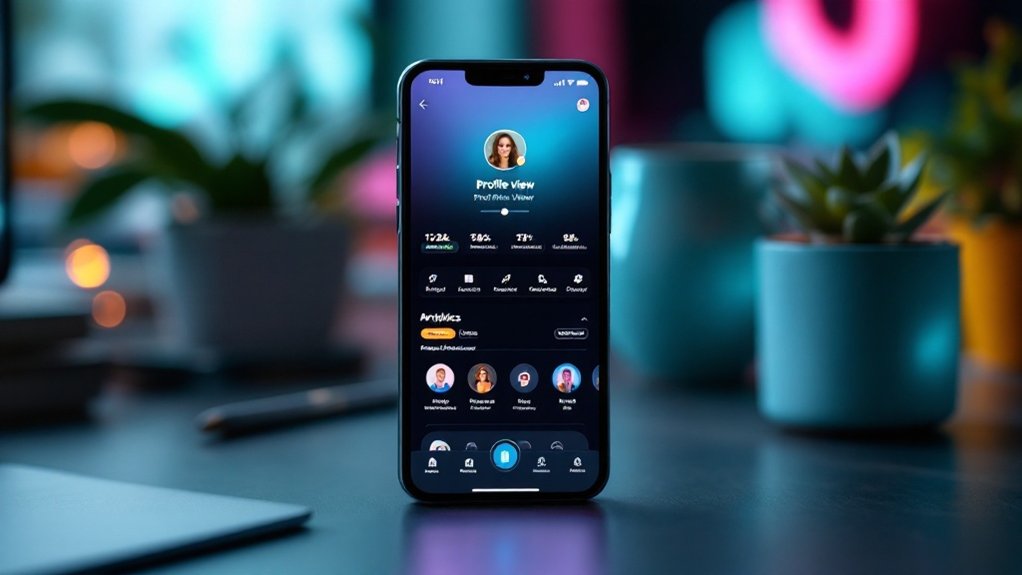Detecting ChatGPT-generated text involves multiple approaches. Linguistic analysis spots unnaturally perfect grammar and repetitive phrasing. Statistical methods measure word patterns, perplexity, and burstiness—AI text is oddly consistent, lacking the unpredictable "bursts" of human writing. Machine learning classifiers achieve up to 95% accuracy with sufficient samples. The absence of personal anecdotes and original humor is telling. Tools like GPTZero can help, but no method is foolproof as AI keeps getting smarter.

As artificial intelligence continues to infiltrate our digital landscape, the challenge of distinguishing human-written content from AI-generated text has become increasingly formidable. The tools we use to detect this machine-made content rely on several telltale signs that separate human creativity from algorithmic production. It's getting harder. Every day.
Linguistic analysis offers our first line of defense. AI text often lacks semantic meaning—it sounds right but says nothing. Repetitive phrases pop up like weeds. Perfect grammar with zero typos? Suspicious. Real humans make mistakes, contradict themselves, and share personal stories. ChatGPT doesn't have "that time in college" anecdotes to share. Modern SEO content tools like Surfer SEO and Frase help identify AI-generated text by analyzing patterns and quality metrics.
Statistical approaches dig deeper. Word frequency patterns reveal the machine behind the curtain. N-gram analysis examines how words sequence together, while perplexity scores measure text predictability. AI writing is typically less "bursty" than human writing—it maintains a consistent rhythm rather than varying between complex and simple passages. Boring, right? Tools like GPTZero specifically measure both perplexity and burstiness to identify AI-generated content with remarkable accuracy.
Machine learning has entered the chat, too. Classifiers trained on human versus AI samples can identify features humans might miss. One XGBoost model achieved an impressive 95% accuracy. Not bad. But these systems struggle with edited AI text, and their effectiveness drops with newer models like GPT-4. It's an arms race nobody asked for. OpenAI's own detection tool requires 1,000 words minimum to function properly, limiting its usefulness for shorter texts. Quality data preprocessing using TensorFlow libraries remains crucial for training effective detection models.
Watermarking might be the silver bullet—if AI companies actually implement it. These hidden signals could make detection nearly certain, but good luck finding them in commercial products. And they're useless against paraphrased content anyway.
The perfectly impersonal tone of AI writing often gives itself away. No original ideas. No contradictions. No subtle humor that doesn't feel forced. Just sanitized, perfectly formatted text.
No detection method is foolproof. False positives happen, especially with non-native English writers. The best approach? Use multiple tools. Analyze longer samples. Look for inconsistencies. Consider context. And remember—AI detectors themselves are imperfect tools in an evolving game of digital hide-and-seek.
Frequently Asked Questions
Can Chatgpt Mimic Specific Writing Styles Accurately?
ChatGPT can mimic writing styles, but it's hit or miss.
Yeah, it analyzes patterns and vocabulary—sometimes nailing the target style. But complex or unique voices? Tough luck.
It often produces generic imitations lacking the author's true essence. The AI struggles with nuance.
Not terrible for basic mimicry, but don't expect literary-level forgeries. A decent copycat, not a master impersonator.
Are There Legal Implications to Using Ai-Generated Content Without Disclosure?
Legal implications? Absolutely. No federal U.S. law yet, but things are changing fast.
EU AI Act demands disclosure. Utah requires companies to tell if asked. California prohibits chatbot deception.
Copyright's a mess too. AI content? Not really protected. Using it might infringe on others' work.
The trust factor can't be ignored. Consumers feel deceived when they discover hidden AI use.
Professional standards? They're getting stricter about this stuff.
Do Detection Tools Work on Translated Chatgpt Content?
Detection tools struggle with translated ChatGPT content. Period.
Translation scrambles the linguistic patterns AI detectors rely on, causing accuracy to plummet. Non-English text? Even worse results.
Most tools are built for English, not the linguistic gymnastics of translation. Cultural nuances just confuse them further.
Some creators are actually "laundering" AI text through translation to dodge detection.
No current tools specifically target this problem. Shocking, right?
How Often Do Detection Algorithms Produce False Positives?
False positives plague detection tools at alarming rates.
Studies show 5-10% of human texts get wrongly flagged as AI-generated. Non-native English speakers? They're hit harder.
Even the fancy Turnitin tool messes up about 1% of the time. Short texts under 300 words trigger more errors.
Formal writing styles, technical content, and well-researched papers all trick these systems.
Quite the problem when someone's academic integrity is on the line.
Can Chatgpt-Generated Text Be Modified to Avoid Detection?
Yes, ChatGPT text can definitely be altered to dodge detection.
People use various tricks—manual editing, paraphrasing tools like Quillbot, or specialized software like Undetectable AI. These methods work by changing sentence structures, adding human-like errors, and incorporating personal touches.
It's a cat-and-mouse game. Detection technology improves, then evasion techniques evolve.
Pretty ridiculous arms race, honestly. Not exactly ethical, either—especially in academic settings.




